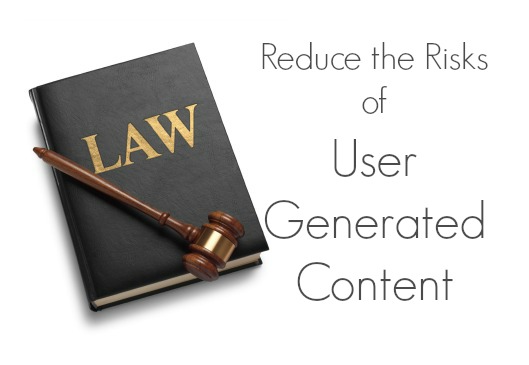By Miva | July 1, 2013

See why top ecommerce brands use Miva’s no-code platform to run
multiple stores, manage massive catalogs, and grow their revenue.
In Part 1: How to Drive Engagement with User Generated Content, we found that User Generated Content (UGC) has endless potential for ecommerce businesses. Today, we will answer some of the questions that may be stirring in your mind about the risks involved in actually implementing a UGC strategy. Click here to jump to Part 3: Plan Your UGC Campaign, where we will show you the 5 golden rules for creating a User Generated Content campaign.
As an essential part of your brand, User Generated Content needs to be monitored. You’ll also need to fully understand the legal risks involved in UGC so that you can take advantage of the available legal protections out there before tapping into the potential benefits.
Any time you allow User Generated Content on your website or around your brand, you open up the gates to…
While these possible ramifications are unlikely, it is still important to keep them in mind while operating a UGC campaign.
If you are thinking of adding User Generated Content to your ecommerce store, use the following precautions to ensure that you are protected.
Don’t Underestimate the power of content creators.” Rohit Bhargava,Founder of Influential Marketing Group
One of the risks involved with opening your brand up to intake UGC is the potential for content quality of amateur contributors to be inconsistent. Take the time to set clear parameters and expectations for users before implementing your UGC strategy to decrease your risks. Decide ahead of time if you will share everything submitted or if you will need a gate-keeper to keep low quality content out.
In order to ensure quality, try offering an incentive of some sort. By turning the submissions into a competition, you can actually incentivize high-quality content. Keeping user content in line with your core values and your overall brand strategy is also extremely important.
Have a content moderation plan before launching your UGC strategy. Create technical and qualitative traits for users in order to guide them in creating the kind of content that you desire. Include standards in your guidelines, such as length, style, how to treat links, etc. By setting an expectation of voice, topics, and quality, content contributors will have a clearer understanding of the quality of content you desire. An easy way to set the expectations and guide content from your users is by providing a concise theme.
Another important precaution to take before you launch your campaign is to make sure that your User Generated Content will not violate any laws. Some laws are platform based. For example, Facebook has its own strict rules that you must comply with. In order to host a promotion on Facebook you must use an application. Also, be clear about the official rules if you are holding a contest to avoid confusion.
Legally, there are requirements you must follow in order to implement a UGC campaign. Follow the guidelines issued by the Digital Millennium Copyright Act (DMCA) and Communications Decency Act (CDA). Once you have reviewed these two acts, you will be able enjoy the benefits and opportunities of UGC with confidence rather than fear of law-breaking.
Create terms, conditions, and policies for your UGC, and you will be able to better protect yourself and your company down the road. Make sure that your policies are up-to-date and that they fully encompass the reach of your UGC strategy.
To be clear on potential legal ramifications, simply do your legal research. As long as you do your research and respect the rights of your contributors, you should have no problems at all. However, to cover all your bases, try speaking with a legal counsel before launching your UGC strategy. The potential value of UGC is so much greater than the time it will take to research potential legal concerns.
Your rules and regulations for contributory content should prohibit against:
ASAECenter.org created these four tips that will help minimize the risk of UGC:
As long as you take these precautions for quality control, there should be no reason why your concerns of potential risk should lead you to avoid UGC. Have a well-thought out approach, use industry best practices, and understand the risks involved. Once you launch you User Generate Content campaign, your worries will surely subside as the engagement grows. Whether you find monetary gains or simply a strengthened social status, UGC can be a great next step for your online business.
Many ecommerce stores have already found that using User Generated Content has increased their sales dramatically. If you’d like to see some of the most common strategies of UGC and the ecommerce stores that have successfully increase engagement through those strategies, click here for Part 1. In Part 3, we will show you how to plan your UGC campaign with these 5 golden rules.
Back to topNo worries, download the PDF version now and enjoy your reading later...
Download PDF Miva
Miva
Miva offers a flexible and adaptable ecommerce platform that evolves with businesses and allows them to drive sales, maximize average order value, cut overhead costs, and increase revenue. Miva has been helping businesses realize their ecommerce potential for over 20 years and empowering retail, wholesale, and direct-to-consumer sellers across all industries to transform their business through ecommerce.
Visit Website